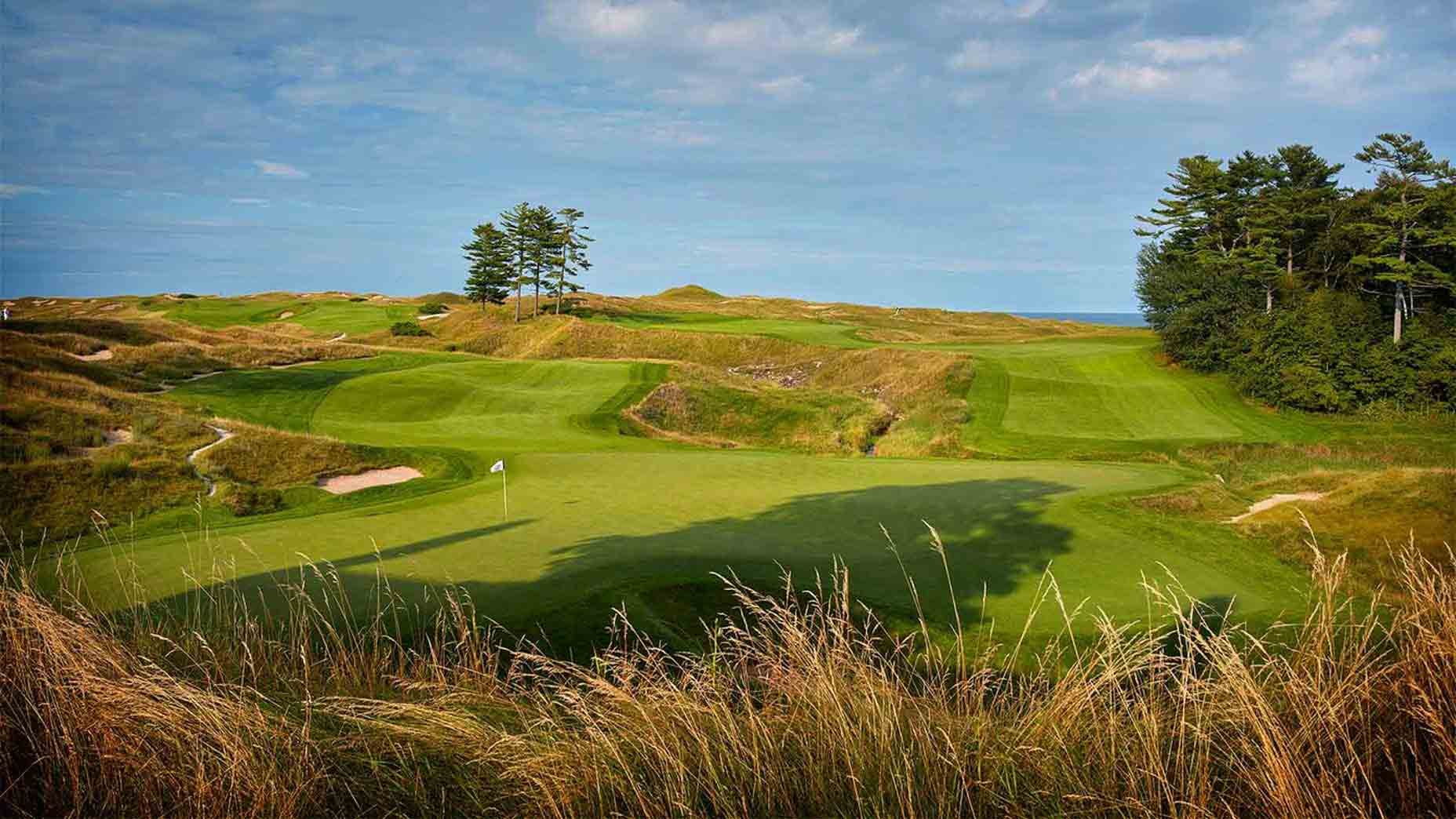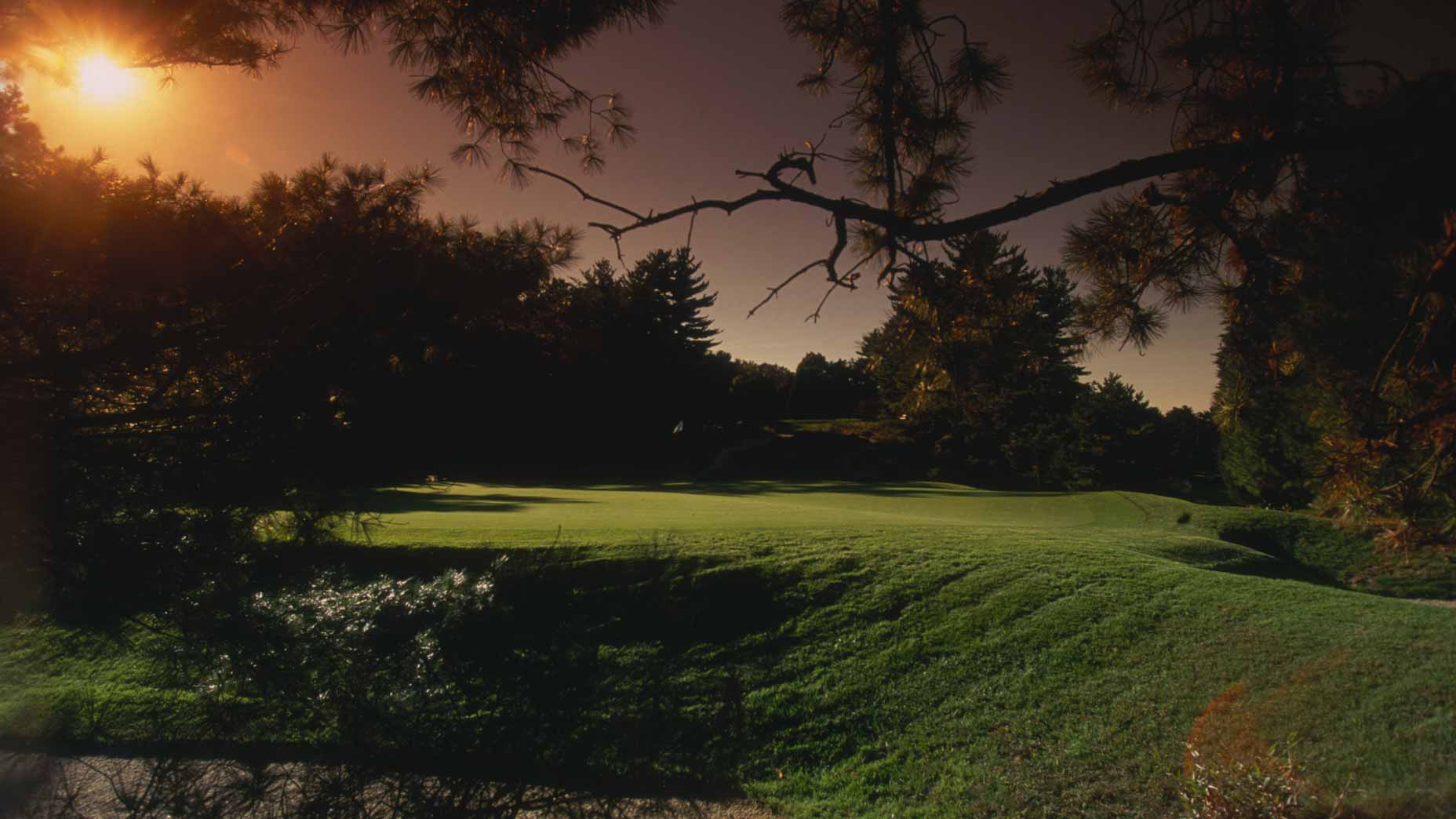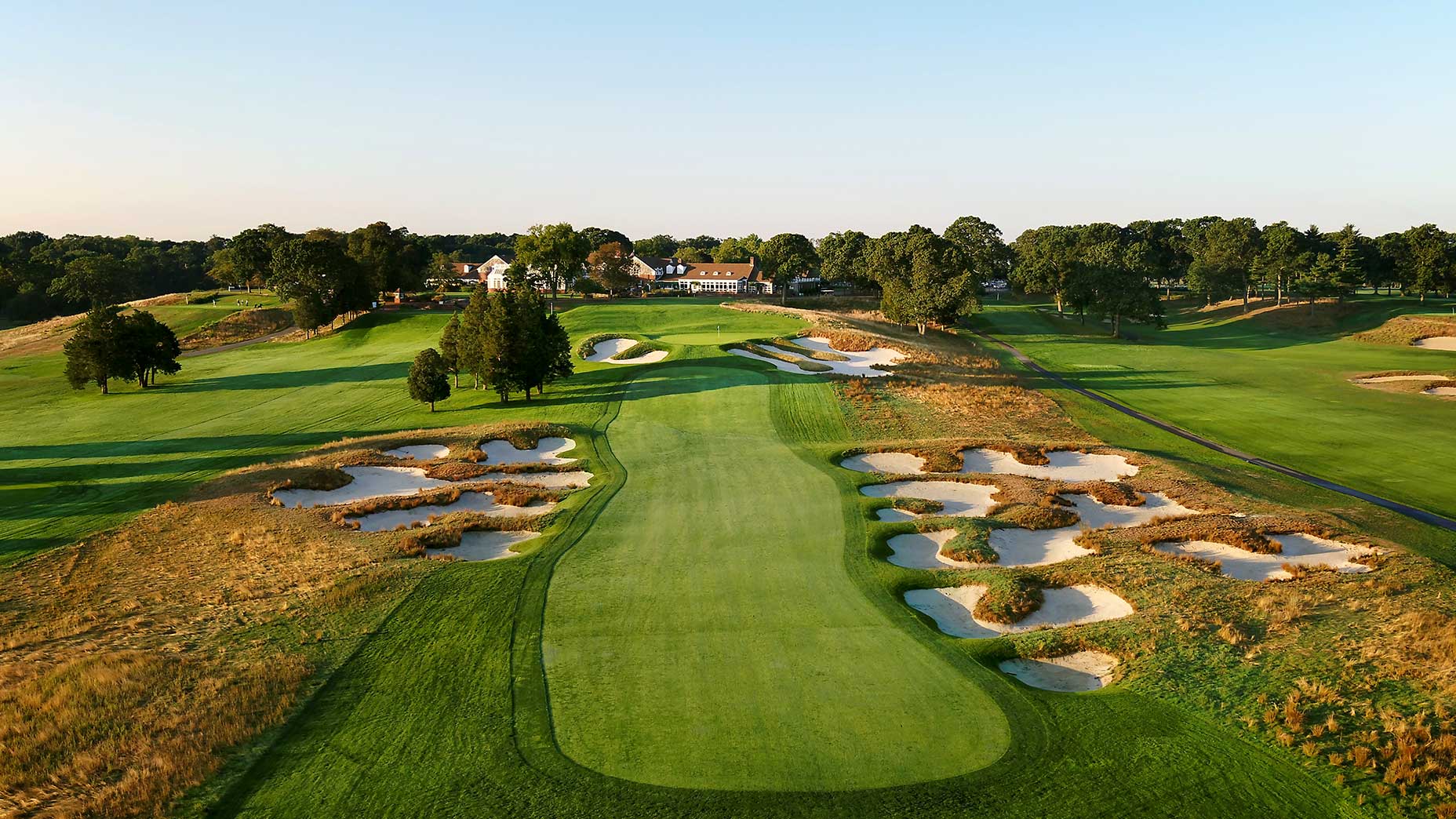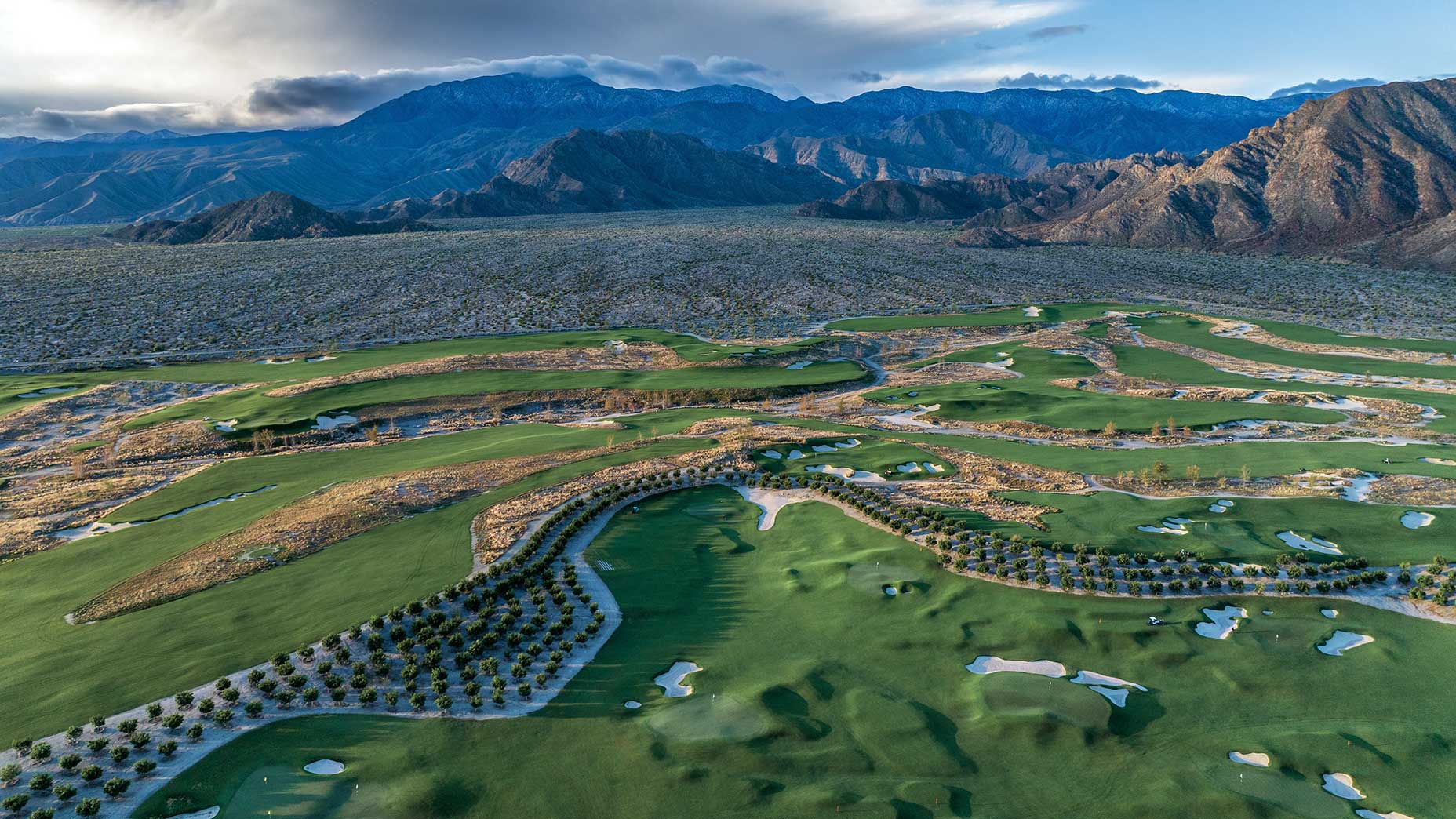 This exclusive Gil Hanse-designed course is a desert masterpiece
This exclusive Gil Hanse-designed course is a desert masterpiece
What is a Punchbowl green, and why they make the game so much more fun

Welcome to A Beginner’s Guide to Golf Course Design, where we’ll dig into the history, design and meaning of golf course architecture terms you’ve probably heard before but might not fully understand. We’ll explain all of the above in an accessible Q&A format, and better yet, teach you how to identify these features and plan your attack for the next time you see one, saving you strokes along the way. In this installment, we’re breaking down Punchbowl greens.
When’s the last time you had punch? Was it even out of a punchbowl?
So maybe it’s been a while since there was a punchbowl out at a party for you to scoop from (college? high school?) but you remember what it looks like, right? Now take that shape, high sides, everything funneling down, and imagine a green in that shape.
That’s exactly what a Punchbowl green is. The green and its surroundings create a bowl, which can even take some offline shots and bring them back toward the center of the green. Like all great templates, there is a lot of variation in what a Punchbowl can be, but most have raised mounding all the way around or on at least three sides. Because of the raised edges, shots into Punchbowl greens are often blind. When the architect takes something away, in this instance your sight, he gives you something back, like some forgiveness in the approach shot.
Are there a lot of these?
Unfortunately, Punchbowl greens are somewhat rare now. In the early days of golf overseas, Punchbowl greens were common because the depressions would gather more water from rain and keep the greens in better condition. The sandy soil made it so drainage was never a problem.
But with modern irrigation systems, the popularity of Punchbowl greens dropped off drastically. Architects no longer needed Punchbowls to keep greens well irrigated, and inland courses with soil that didn’t drain as well were not suitable for Punchbowl greens because they’d retain too much water.
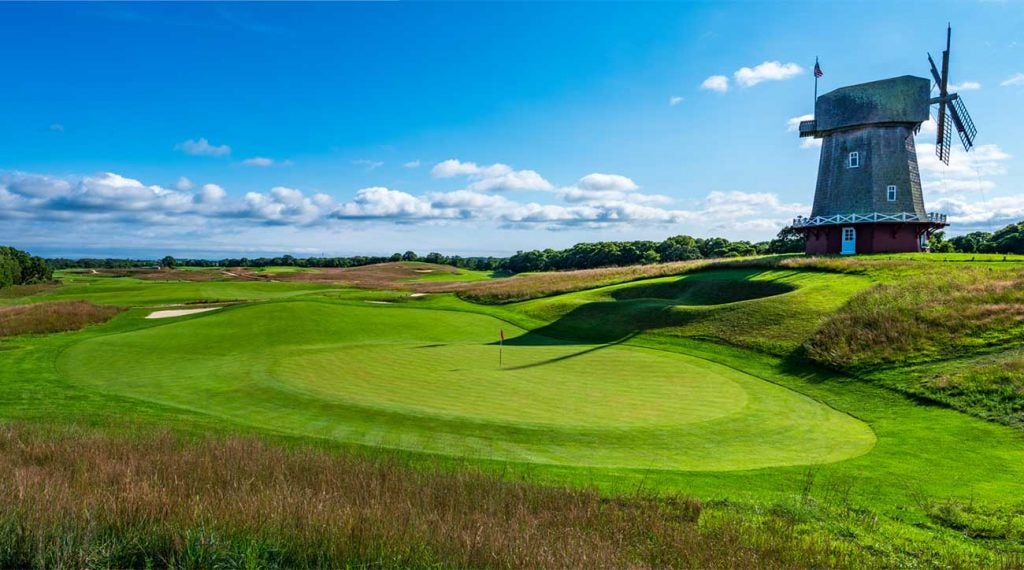
So then who did build them?
As always, C.B. Macdonald and Seth Raynor were at the forefront of bringing the template to the U.S. Both were smart enough to create Punchbowls that had easy drainage points to keep them in good condition. Raynor was particularly proficient at this with his engineering background.
But fairly recently Punchbowls are beginning to make a comeback. Architects like Gil Hanse, Mike DeVries and Brian Silva are building them and have the expertise to allow them to be well-maintained.
And why should I like them?
Punchbowl greens are fantastic because they can be implemented into so many different hole designs to add more excitement. You can find holes featuring these greens that are par-3s, 4s and 5s. There are so many fun elements of a Punchbowl. If your shot is slightly offline, the undulations can vastly improve your final resting spot. But it can also push poorly hit shots that don’t find the bowl even further away. Because the ball can roll back and down off the sides, Punchbowl greens are accepting to approaches from longer irons and woods. A par-5 with a Punchbowl green might be the best chance at eagle you ever have, even if your approach happens to be blind.
ADVERTISEMENT
Are they all just circles?
Some of the best Punchbowls still have striking movement and undulation. Some even have several levels or plateaus within the green surface. Just like the Alps hole, people thought Punchbowls were unfair because many included a blind shot, but don’t have a negative attitude. Remember how fun it’s going to be when you realize the sides of the bowl gave you a much shorter putt than you expected!
Where are some of the best ones?
9th at Streamsong Black
The Gil Hanse-designed third course at Streamsong is full of fantastic holes, and the 450-yard par-4 9th is no exception. The mounding is not uniform all the way around, adding some luck and some fun. The green itself is also full of amusing undulations.
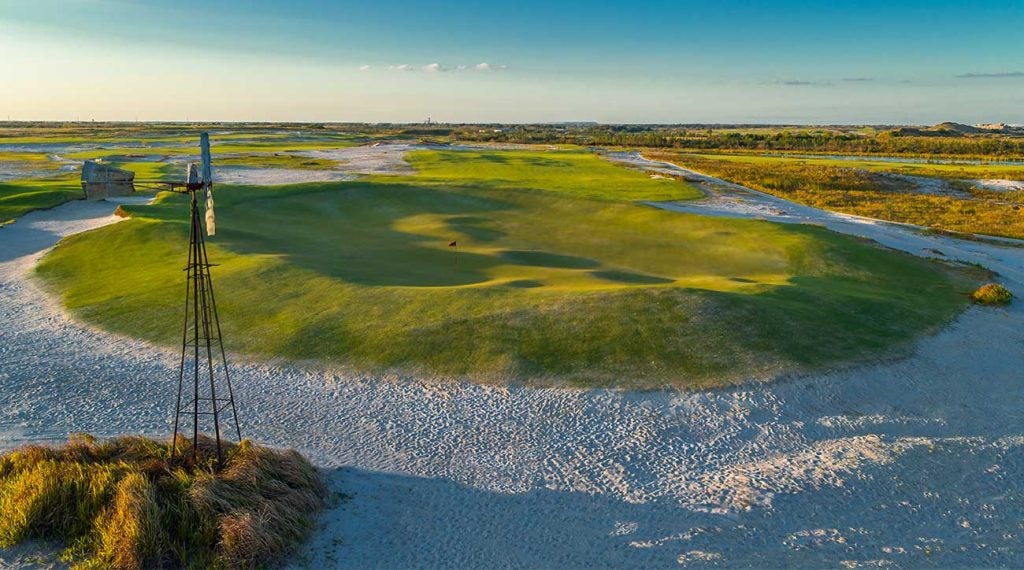
16th at National Golf Links of America
It’s no surprise there is another incredible template hole at National Golf Links of America. Macdonald built a masterful 415-yard par-4 in the closing stretch, and although the green is quite small, the Punchbowl surrounding can swallow up and help shots slightly off target.
5th at St. Louis C.C.
A 510-yard par-5 at this wonderful Macdonald course features a Punchbowl green and a principal nose bunker on the way in. The green was moved in the 1950s, but architect Brian Silva restored the hole to its original site. The right side of the fairway feeds into the green, allowing longer shots to roll in if you decide to try to reach in two.
5th at Kingsley
Course architect Mike DeVries fit this par-3 green into the terrain in amazing fashion. Often playing with difficult wind, the view from the tee is intimidating, but the Punchbowl effect makes things slightly easier.
6th at Black Creek
Silva also built many holes at Black Creek Club in the style of Raynor and Macdonald. This includes the par-5 6th, which plays to a huge but blind Punchbowl green. Approach shots only need to make it over some cross bunkers short of the green, and the slopes will corral the ball into the green. Oh, and this one is a massive 14,000 square feet!
Have You seen our latest episode of Subpar featuring Kiradech Aphibarnrat? Click the YouTube link below to check it out!
CLICK HERE FOR KIRADECH APHIBARNRAT’S SUBPAR INTERVIEW
To receive GOLF’s all-new newsletters, subscribe for free here.
ADVERTISEMENT



